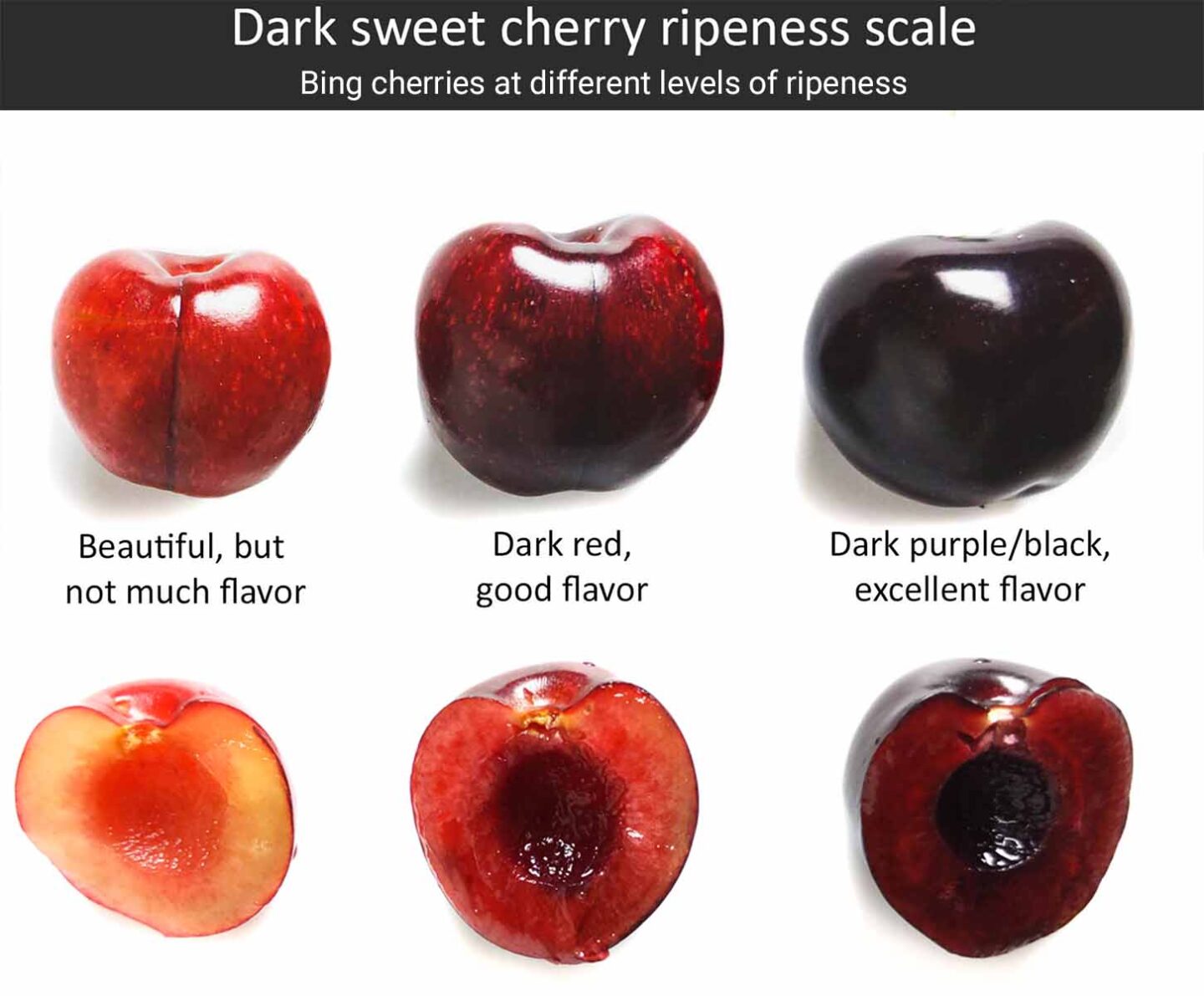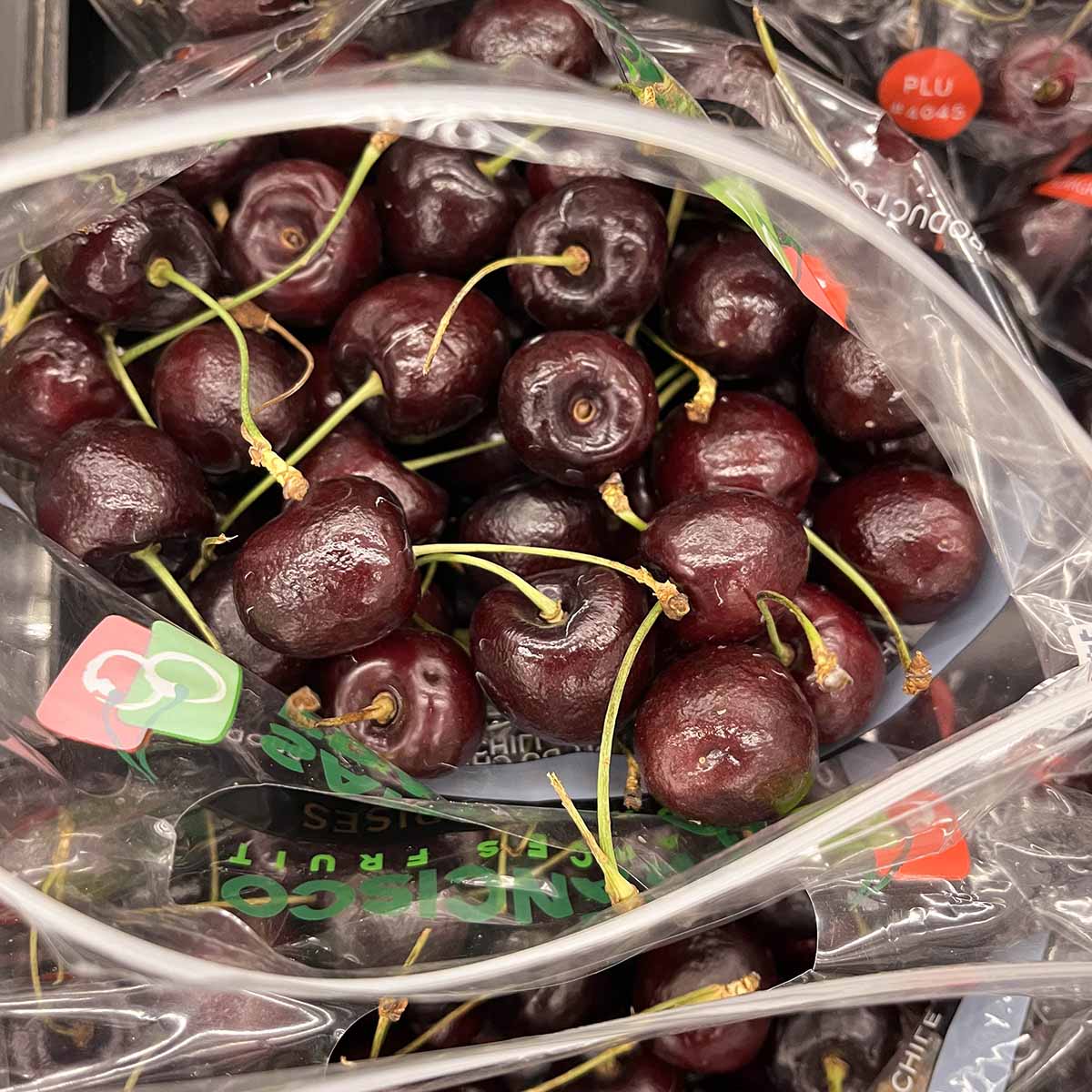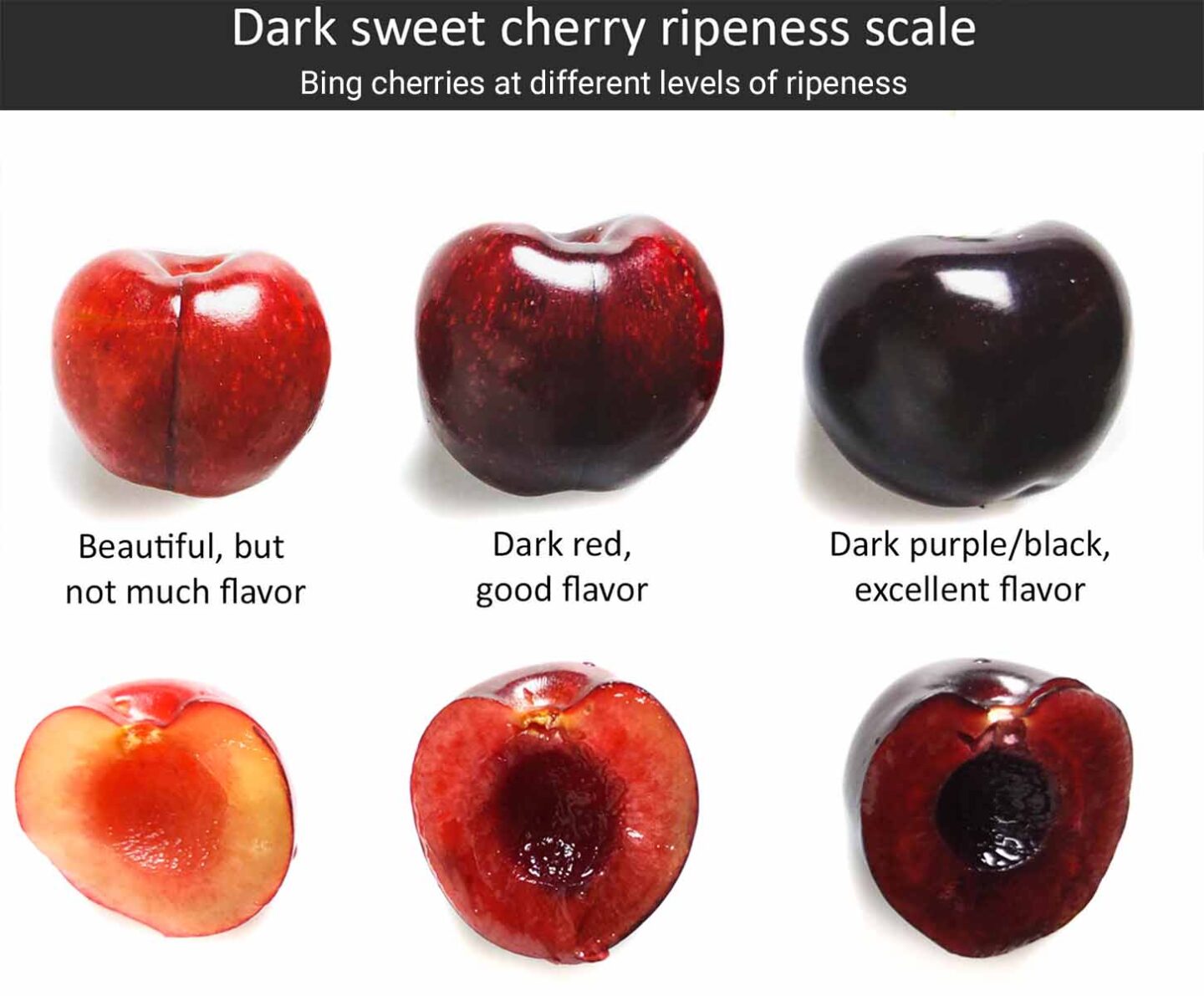As a cherry lover I eagerly await those first sun-ripened cherries of the season. But knowing exactly when to start picking cherries from your tree requires paying attention to some key signs. Ripe cherries don’t stay on the tree for long so you need to monitor them closely and harvest at just the right time.
In this article, I’ll share tips to identify when cherries are ripe and ready for picking. With this guide, you’ll enjoy harvests of luscious, fully matured cherries straight from your backyard.
What Determines Cherry Ripeness?
Several factors influence when cherries ripen:
-
Variety – Early season varieties like Bing ripen sooner than mid/late season types like Rainier or Van.
-
Weather – Warm, sunny weather accelerates ripening. Cool, cloudy conditions delay it
-
Location – Cherries grown in warmer climates ripen earlier than those in cooler regions.
-
Tree Age – Older, established trees reach maturity sooner than younger ones.
-
Pruning and Care – Proper pruning and nutrition results in timely ripening.
Knowing your variety’s typical harvest window is a starting point for gauging ripeness. But use visual and tactile cues to pinpoint ideal ripeness on your specific tree.
How to Tell When Cherries Are Ripe
Follow these signs to identify perfectly ripe cherries ready for picking:
Color
-
Sweet cherries turn deep, vivid red, reddish-black, yellow, or a mix when ripe. Avoid pale or blotchy color.
-
Tart cherries become a rich ruby red at maturity. Avoid oranges, yellows or mottled color.
Size & Shape
-
Ripe cherries feel firm and plump, filling out to a round shape.
-
Avoid shriveled or flattened fruit.
Stem
-
Ripe sweet cherries release cleanly from branches when lifted, leaving the stem attached.
-
Tart cherries separate more easily, often dropping stem-less when ready.
Taste
-
Sweet types are ripe when sugar content peaks, tasting very sweet.
-
Tart cherries remain tart when ripe but become softer.
Harvesting Ease
- Ripe cherries pull off their stems easily without tearing skin or breaking branches.
When to Start Checking for Ripe Cherries
Begin monitoring cherries 7-10 days before the expected ripening date for your variety. Check fruit every 2-3 days as maturity approaches.
Once fully colored, do a frequent taste test on several sample cherries around the tree. When most taste ripe, plan to harvest soon. Ripe cherries deteriorate quickly in heat.
Signs Cherries Are Past Ripe:
-
Skin appears wrinkled/shrivelled
-
Leaking juice
-
Dull, faded color
-
Soft or mushy texture
-
Brown stem scars
-
Fermenting odor
Pick all ripe fruit as soon as possible to prevent spoilage. Overripe cherries won’t store well.
Tips for Picking Ripe Cherries
Follow these guidelines for harvesting ripe cherries:
-
Pick in dry weather to minimize splitting.
-
Gently lift fruit with stem attached to avoid damaging spur.
-
Use scissors for high, hard to reach branches.
-
Avoid tugging or yanking fruit to prevent injury.
-
Use bags, baskets or pails designed not to crush fruit.
-
Handle gently to avoid bruising delicate skin.
-
Keep harvested cherries shaded and cool.
-
Refrigerate harvest within 2 hours.
Storing Your Fresh Cherry Harvest
Here are some tips for storing fresh-picked cherries:
-
Sort out any damaged, bruised or overripe fruit first. Use these immediately.
-
Place intact, ripe cherries in a single layer in a shallow container lined with paper towels.
-
Refrigerate unwashed cherries promptly, ideally within 2 hours of picking.
-
Store cherries in high humidity (90-95%) to avoid shriveling.
-
Keep refrigerated cherries loosely covered to allow air flow.
-
Enjoy fresh cherries within 3-5 days for maximum flavor and texture.
-
Freeze excess harvest in a single layer on trays until solid, then transfer to bags.
Common Cherry Varieties and Their Ripening Windows
Here’s a quick guide to ripening windows for popular sweet and tart cherry varieties:
Sweet Cherry Ripening Times
- Bing – early June
- Rainier – mid June
- Van – late June
- Brooks – late June
- Sweetheart – late June/early July
- Chelan – early July
- Lapins – early July
- Sweet Georgia – mid July
Tart Cherry Ripening Times
- Montmorency – early July
- Balaton – mid July
- Danube – late July
- Meteor – late July
- Northstar – early August
Now that you know what signs to look for and when to start checking, you’ll be ready to harvest bowls of ripe, juicy cherries at their peak flavor. Trust me, nothing beats picking tree-fresh cherries warmed by the summer sun!
What is the difference between sweet and sour cherries?
Sweet cherries: These are better than sour cherries for eating fresh. They also work great in salads and in baking.
Bing cherries have a deep red color when ripe. Rainier cherries have a yellow color with red spots on them. They are sometimes a little sweeter and less acidic than Bing cherries. These are commonly found in stores and farmers markets.
Tart (aka sour) cherries: These are most commonly used for pies, juices, jams, and drying. Fresh sour cherries are rarely found in grocery stores but you might luck out at the farmers markets. They have a shorter season (usually mid-June through July) and spoil easier.
How to tell when cherries are ripe & sweet
Once harvested, cherries no longer ripen which means they are at the sweetest they will ever be. Thats why it is important cherries are harvested at peak ripeness.
Farmers markets are your best chance of finding sweeter, more flavorful cherries. The riper ones don’t do well in transport, so they don’t make it to grocery stores. They’re great for markets, though.
For dark sweet cherries like Bing, the sweetest ones will look like they are black instead of red. But you might also want to buy yellow Rainier cherries because they tend to taste sweeter because they have less acidity.

Ripe, in-season cherries should have the following characteristics:
- Firm (squishy cherries are over ripe)
- Plump (wrinkled skin is a sign of decline)
- If they still have stems, they should be fresh and green. Stems that are dry or brown mean they were picked a while ago and won’t taste as good.
- Cherry dark sweets should be very dark red or black in color. Rainier cherries should be a bright yellow with blush red.
When cherries start to go bad, they wrinkle and soften, as pictured below. That kind of bad cherry season happened in both 2021 and 2022 because the weather wasn’t nice. I also found cherries imported from Chile this winter (2023) that look like the picture below as well. Heres to hoping for a better 2023 season.

Store cherries, unwashed, in a plastic bag in the fridge and they will last about a week.

The yellow-red Rainier cherries are prized for their lower acidity and sweeter flavor.
Also, they are more likely to be wet than dark sweet cherries, so keep that in mind when you bake or make something with them.
Rainier cherries are usually more expensive for several reasons. They are more susceptible to bad weather conditions, bruise easier, and have a shorter harvest window. All of these combined raise their costs.
When is it ripe? Cherries
FAQ
Should cherries be hard or soft?
Can you pick cherries early and let them ripen?
When’s the best time to pick cherries?
How do you know when Cherries are ripe?
Ripe sweet cherries can be dark red, bright red, yellow, yellowish-red or black when fully ripe. How to tell when cherries are ripe: Sweet cherries are ripe when their stems pull easily from the tree and the fruit is plump and juicy. You can do a taste test to know when they’re ready to pick – sweet = ready! How can you tell if cherries are ripe?
What is the serving size of cherries?
You can eat the portion you want of cherries. However, one compote per day is fine. Excess cherry can result in excess blood sugar and can also cause gastrointestinal upset.
When are cherries ripe?
For cherries, the early season starts around June 10, the most active season is the entire month of July and the late season is August 10. According to Not Far From the Tree, ripe cherries come in different colors. They can be bright red, dark red, yellow/red, yellow or even black when fully ripe and ready to enjoy.
Do cherries ripen after picking?
Fruits that don’t ripen after picking, like cherries (Prunus, USDA plant hardiness zones 4-9), have to be watched carefully because if you harvest them too soon, they won’t have the best taste and texture. Experts describe cherries as a nonclimacteric fruit that produces very little or no ethylene gas to aid with ripening.
- The Ultimate Guide to Growing Strawberries in Raised Beds - August 8, 2025
- No-Dig Garden Beds: The Easiest Way to Grow a Beautiful Garden - August 6, 2025
- How to Protect and Preserve Wood for Raised Garden Beds - August 6, 2025

